Thanks to Warlord Games for providing this kit for review.
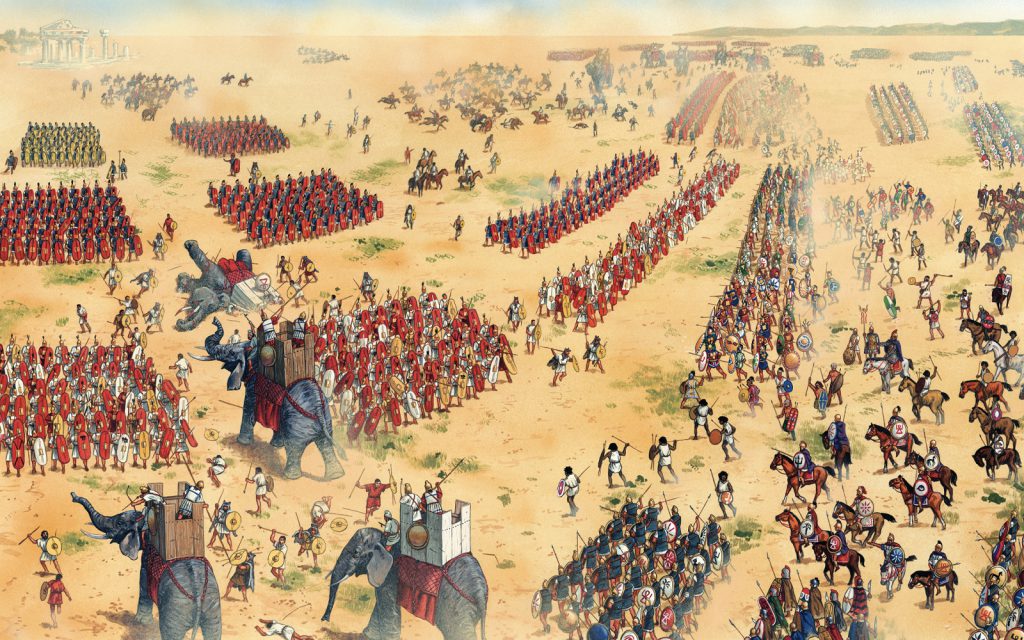
Hail Caesar Epic Battles: The Punic Wars is Warlord Games’s newest entry into their ever-expanding range of epic scale wargames. Set in antiquity and taking on the name of its 28mm cousin ‘Hail Caesar’ the first wave of models and rules focuses on the Punic Wars. Though looking at the dramatis personae, the focus is more on the second Punic War specifically. Hannibal Barca and Scipio Africanus being the two big commanders alongside their closest allies and generals facing off one another.
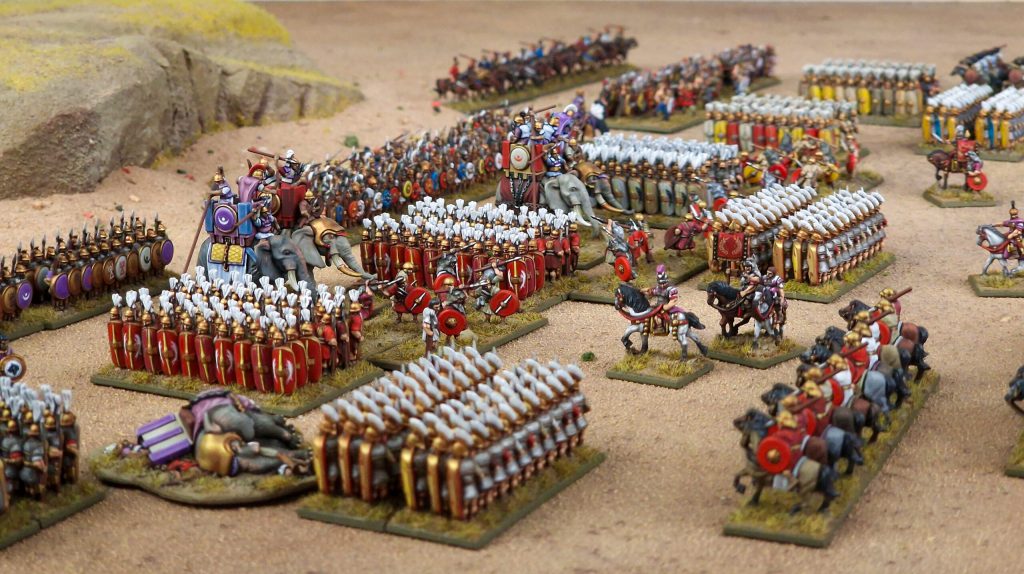
I was lucky enough to be sent one of every sprue of the new miniatures to give my opinion on them. But truth be told, I also approached this as an entry into the small scale side of the hobby. While I have some free epic ACW sprues on my pile of shame, the only attempt at painting small scale was a base of Space Marine Orks and a small trukk. That was more than 4 years ago and I have not given it any further thought until now. So while I will give my opinion and impressions of the new miniatures, I will also give my impressions how they work for newcomers. Now, given that it is the era of Hannibal that means one thing: War Elephants! And let me tell you, I was beyond excited to paint up some small elephants. I guess this is Warlord’s version of the Idoneth Crab miniature, if you know what I mean.
The Sprues
There’s five new sprues:
- Republican Romans
- Carthaginians
- Celt Warriors
- War Elephants
- Allied Troops
If you’re familiar with previous Epic Battles releases, you’ll find the troop lay out on these sprues familiar. There’s your classic blocks of infantry such as Triarii, Scutarii or Celt Warriors. There’s one mounted Commander (and for the Celts a mounted standard). A small skirmisher unit such as the Velites, Numidians or Slingers. And lastly, there’s one to two units of cavalry.

Something to pay attention to with cavalry: the Republican Roman Sprue only has 2 of each cavalry type on it, so you can’t make a full unit of either with a single sprue. Meanwhile the Allied sprue and the Carthiginians have two full five man cavalry units on their sprues. The Allied sprue also doesn’t come with a commander on it as it is meant to go with either Carthage or Rome. Other oddities include all of the skirmisher miniatures coming with pegs for the bases, EXCEPT for the Roman Velites, or the Republican Roman blocks coming with a blocky middle segment, so you can build a tightly packed, three ranked unit. And then there’s the Eeephant(s) in the room. The War Elephant sprue is all you would expect, coming with two differently-equipped elephants, their howdahs and multiple crew to man them. I do have opinions about the crew, but we’ll get to that later.
The Sculpts
While I haven’t painted anything epic scale before, I did get some free Civil War sprues in Wargames Illustrated, so there was one thing I was slightly dreading: The weirdly sliced off details around the point where the molds meet. Except for the big blocks of Infantry and the Elephants themselves, every model has a lack of detail going towards the mold line, faces lose definition on one side and weapons get unusually wide. I get where it comes from and I think it won’t bother 90% of people who play with epic scale stuff. I do however think it’s important to point out, as it can make the painting process a bit odd here and there and from what I have seen is absent on metal cast small scale models. Otherwise these miniatures have lovely detail for the scale, especially on very fine details such as feathers.
And girl, let me tell you about the elephant skin! While they are a lot bigger than humans, the amount of detail and wrinkles on the skin is just phenomenal, big thumbs up from me. I do have one issue with the War Elephants, or their crew more specifically. The commander with bow is supposed to lean over the howdah’s railing while shooting, so they modelled a flat surface right across his crotch. All good so far, but the issue comes when you’re gluing him to the howdah. He is too tall, so you can see the flat area showing, he’s also not really able to be put up against the railing because of his bow (as it will bump against the outside of the howdah). If you zoom in on the studio painted versions, you can see the black painted over the flat areas and also that they are not up against the howdah.
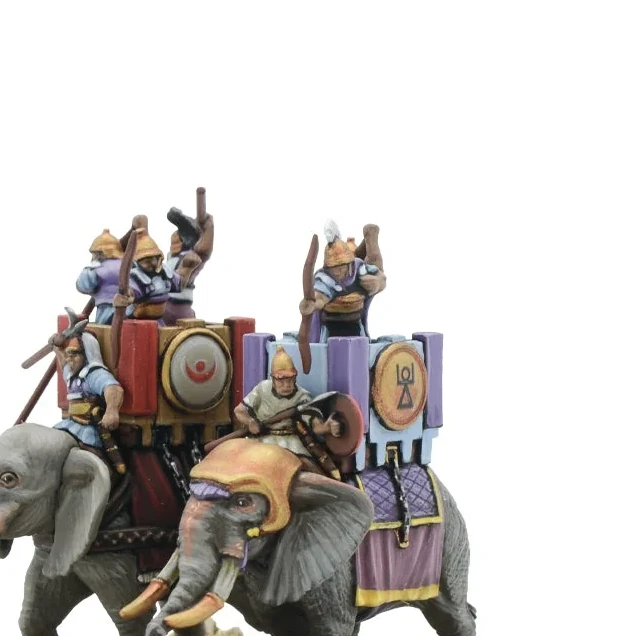
All this rather confusing description to say: Do some dry fitting of your crew before painting as you might run into some issues.
Painting Little Guys
I originally intended to paint more than just three units, but seeing how I haven’t really painted small scale before it was inevitable that I would run into some issues. My first project was obviously the elephants. When assembling them, it’s smart to put them in sub-assemblies. As you can see on the photos, I assembled the elephants and their howdahs and then put each on their own temporary base. You can make use of their little peg and put it into a slotta base, while adding a little super glue to one of the other feet. The crew was a different story, while you could absolutely put them on temporary bases there’s issues. The two pikemen obviously hold their spears lower than their feet, so I needed to angle them in a way that the spears wouldn’t go below the base. For this I cut out two small pieces of sprue with an angle on one side and then put them on the base as shown below.

The rest of the crew was put on two other bases. I put a beam of sprue on each so I could sit the two riders on them.

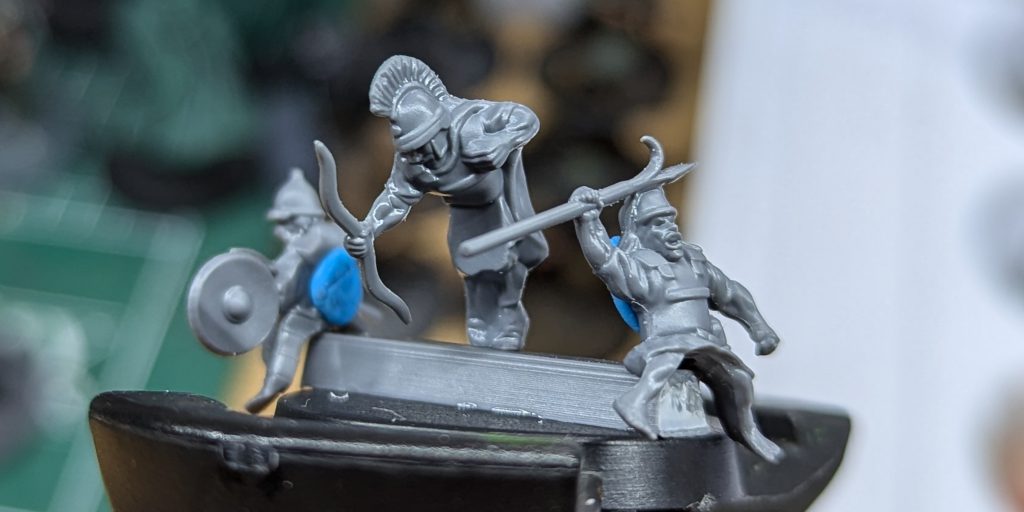
Elephants
I started with painting the elephants, employing a mix of drybrushing and highlighting to give their skin enough texture and integrate the more rosy skin tone around the bridge of the trunk, their eyes and ears. Their tusks where done by applying ivory across it first and then gradually dulling it down towards the ‘gums’. I also made the decision to paint the howdahs as though they were bare wood. While colorful is probably the better choice when painting smaller miniatures, I found some illustrations of War Elephants online with bare wood howdahs that convinced me otherwise. Lastly, as these big beasts have some sizeable eye sculpts I would encourage you to paint them in as it gives them a lot of character.
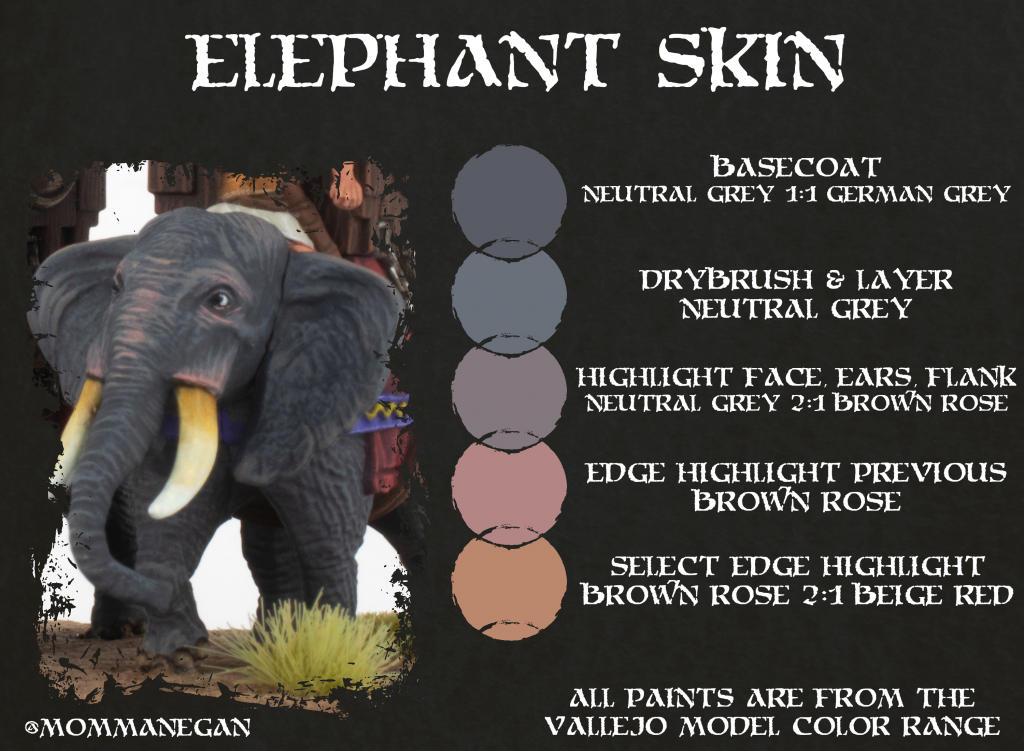
Crew
The crew was truly my first experience painting small scale miniatures, to add to the difficulty of learning a new approach it was incredibly hot and paint dried very quickly on my brush. The first thing I figured out was to use paint intensity; while I have seen people use more or less coats on 28mm to add highlights (it’s glazing, just a bit more manual) I found it was much easier to apply on smaller miniatures. I also had to relearn brush control a little, especially when painting in details such as fingers or cheeks. I found that my usual approach of trying to bring out lots of details was a little wasted here, so I pivoted to dedicating my details to key areas such as faces and certain key colors. I know I’m not breaking new ground here, but I have watched multiple videos of people explaining how to paint epic scale miniatures and so far had not actually understood it. I am not sure if I fully do now, the long time it took me to paint three units stands as testament to that, but I feel I at least understand it more.
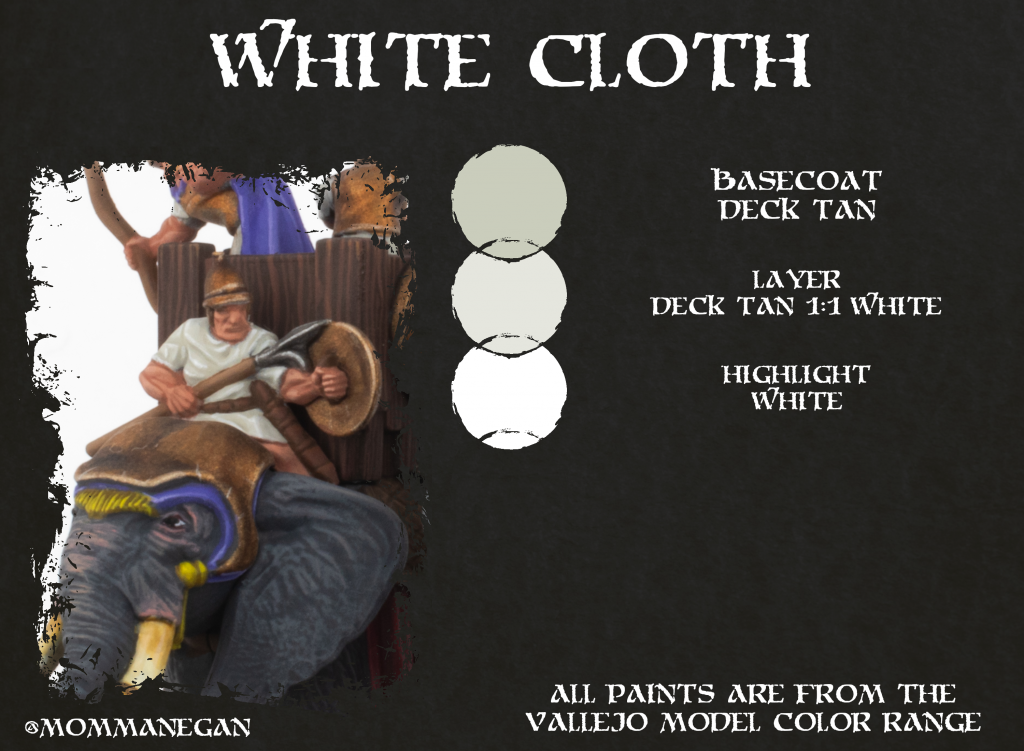
Assembly
Once done with both elephants and crew I carefully removed the elephants from their temporary bases (wear gloves for this!) and glued them onto the big multi-base. Don’t forget to dry fit! I fucked up a little when attaching the crew as I put glue into the howdah and just put crew in as I thought was cool, figuring out in the process that certain angles and poses don’t work. After a few redos I had the crew down and was ready for basing.
Basing
When basing smaller figures you want to use either really small grain sand and do the PVA method or source a very fine basing paste. I decided to go with option two and gave it a gentle one over with the basing paste. Once that’s dried, you can paint it up, edge the base and give it a good coat of matt varnish (or satin if you wish). And finally, tufts. The standard tufts won’t quite work here as they come across more as really big bushes (which you can use sparingly as I did for my Velites). So try and source some 2-3mm grass tufts, mine were Gamer’s Grass, and add a few here and there on the base.

Velites
Next up to paint were some Roman Velites. These Caesar’s Legion lookalikes are the Roman skirmishers, which means some freedom in how you put them on the base. When assembling these I noticed, there’s more holes on the base than there are minis to put on it, so you’ll need to do some gap filling there. I wanted to try out some different skin tones and some skin effects on these guys (as my elephant crew was all just white guys). I opted to also paint some of their tunics in different colors to add to their scattered nature as skirmishers. The biggest hurdle I faced when painting this unit was the wolf fur two of them are wearing, trying to paint a decent looking fur at that scale is really difficult
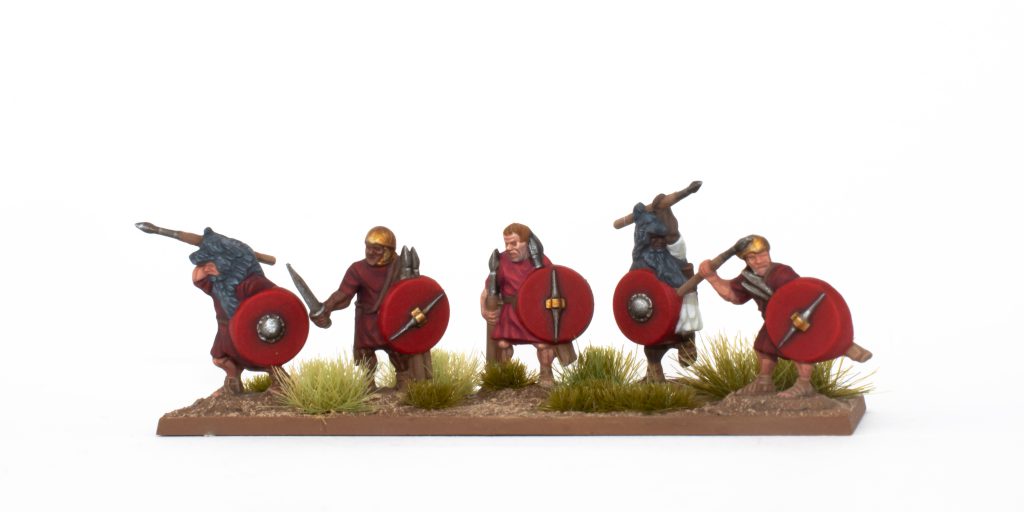
You can see some variety in the skin tones and I think the beard shadow came out rather nicely on the central dude.
Carthaginian Commander
I wanted to try and push myself a little further on this guy;
after all he is the commander and should stand out. The first hurdle was the horse. Horses, the bane of every painter’s existence; white-grey horses even more so. My approach here was to define muscle areas with a highlight color rather close to the basecoat and from there feather out highlight more towards edges that catch light. It’s still incredibly tedious, but the scale does make it more forgiving in my opinion.
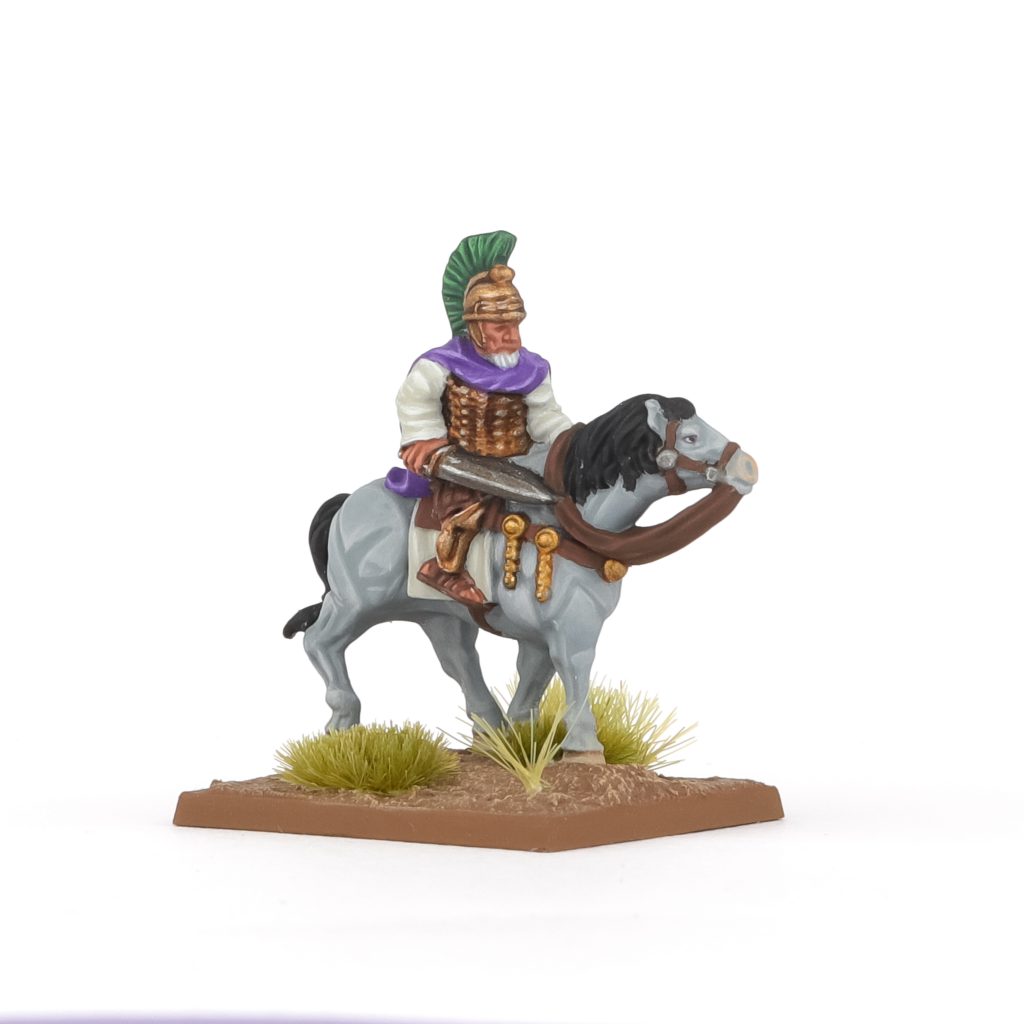
Final Verdict
So I have one issue with these miniatures, though I am mostly sold on them. My issue relates to the warping around mold lines. It bothers me specifically because you kind of need to surgically recreate details with highlights. While that won’t be an issue when playing the game, it is irritating from a painting perspective. This also somewhat limits how you can put together your skirmisher units as they have about 1-2 good angles before the mold-warp-thing becomes too noticeable.
Now how do I feel about these as someone who’s relatively new to painting on this scale? I think they are pretty good, their scale allows for a good amount of details to keep things recognizable. While the point of epic is obviously smaller models, there’s a point (such as with the 6mm of Legions Imperialis) where details become more of a suggestion and the painter has to do some work for the model to sell it as what it is. Epic Battles, while bouncing around in scale (hymph), remains somewhere around 15mm and so keeps enough details, that even new painters just have to color in the panels so to speak. So yea, if you are curious about Epic Scale and want to dip your flippers in the pool, pick up a sprue of these and give it a shot, you’ll be surprised what you can do.
Only one somewhat meaningful issue and a good grade for beginners. I think Warlord did an amazing job with this line. While the last few lines probably had the same level of quality, I think the Hail Caesar line just lends itself much more to hobbying. While you can always paint your miniatures as you like(and you should!), there’s a certain rigidity with historical eras such as the Napoleonics and the American Civil War. They did make something more interesting with their Pike and Shotte line, but even that is still very drab. Ancients however has sooo many colors. There’s also much less uniformity, if you have a Celtic army, it’s not gonna be one tribe with one color, it’ll be many different tribes, all mixed up and wearing all kinds of colors. Even Carthaginians have their nice bright tunics, purple capes and shields and red crests. And lastly the Romans bring all kinds of reds and blues. I think this is a fantastic start. However I hope they don’t let it slide like they did with some of their other lines and expand only on this one conflict of the Punic Wars. I hope they go to the wars in Britannia, Gaul, Dacia, Germania and so on. I think many people would also be happy about some Roman variations(my colleague specifically wants early imperial Romans).
Coming back to the original point: The miniatures are good, I would absolutely recommend them and even encourage you to try them. I hope you enjoyed this review and I could give maybe sway you if you were undecided before. As always, thank you Warlord Games for sending me over the sprues and thank you dear readers for reading.
Have any questions or feedback? Drop us a note in the comments below or email us at contact@goonhammer.com. Want articles like this linked in your inbox every Monday morning? Sign up for our newsletter. And don’t forget that you can support us on Patreon for backer rewards like early video content, Administratum access, an ad-free experience on our website and more.


